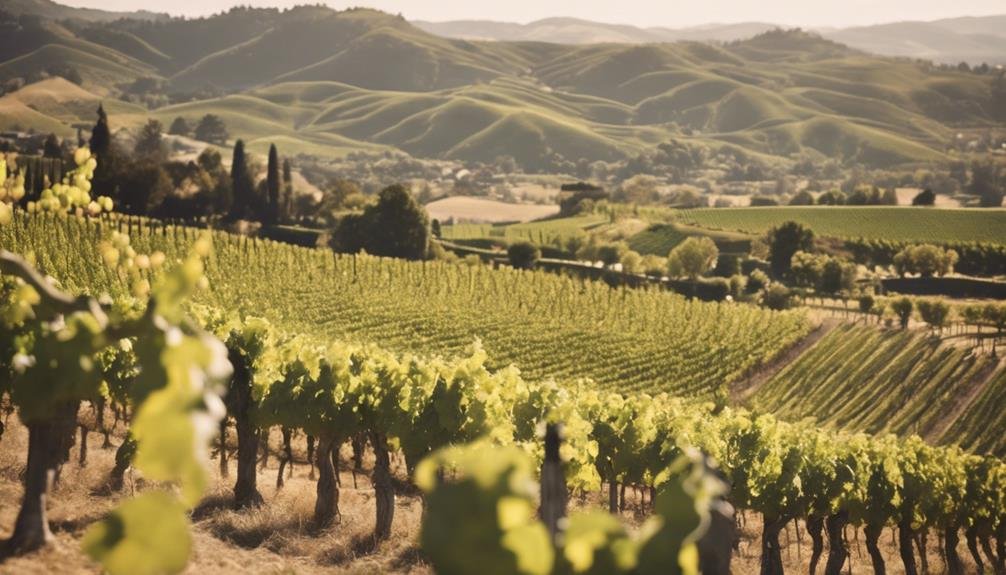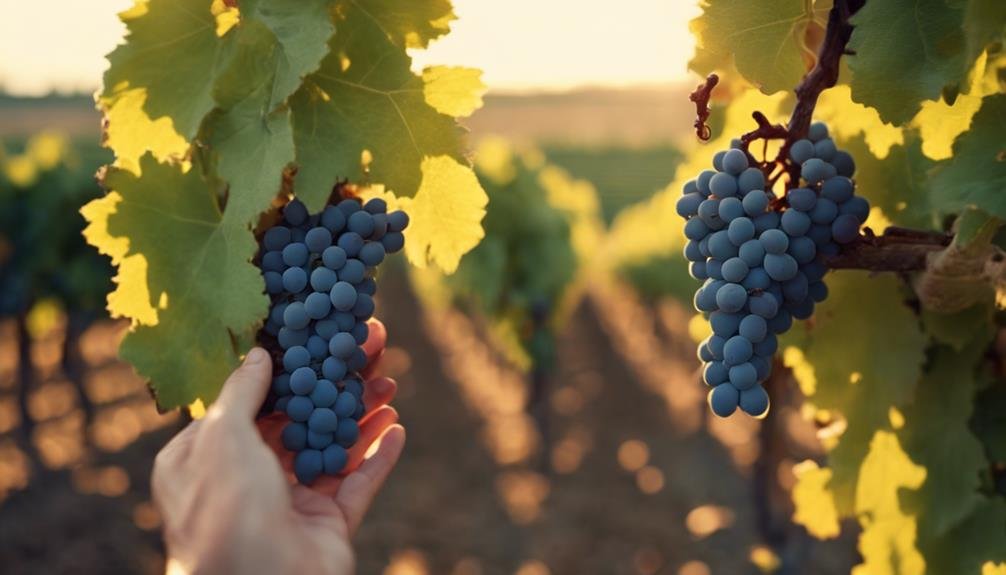Begin a flavorful journey through Sauvignon Blanc, a white wine boasting diverse fruit notes like lime, green apple, and passion fruit. Its herbaceous undertones of bell pepper and gooseberry add depth. Known for its dry profile, it pairs well with green herbs, seafood, and tangy cheeses like goat cheese. Diverse regions like Loire Valley and New Zealand cultivate distinct flavors influenced by soil and climate. If you're intrigued by its complexity and versatility, there's a world of Sauvignon Blanc waiting to be explored, offering a deeper understanding of its nuances and global significance.
Sauvignon Blanc Flavor Profile
The Sauvignon Blanc flavor profile showcases a diverse range of primary fruit flavors, herbaceous notes, and aromatic compounds that set it apart from other white wines. Exploring aroma profiles reveals lime, green apple, passion fruit, and white peach notes, with variations based on grape ripeness ranging from zesty lime to flowery peach.
Unique herbaceous flavors like bell pepper, jalapeño, gooseberry, and grass contribute to its complexity, derived from pyrazines and aromatic compounds. Vineyard techniques and regional variations influence these flavors, with different grape varietals offering distinct characteristics.
When considering wine pairings, Sauvignon Blanc complements green herbs, goat cheese, white meats, fish, shellfish, and softer cheeses, making it a versatile choice for various dishes.
Understanding Sauvignon Blanc Dryness
Exploring the nuances of Sauvignon Blanc extends to understanding its dryness level, a key aspect that distinguishes this varietal among white wines.
The dryness debate surrounding Sauvignon Blanc typically leans towards being completely dry, with some exceptions where producers may add a gram or two of residual sugar for texture nuances. This touch of residual sugar can impact the overall mouthfeel, offering a different sensory experience.
The dryness level can also be influenced by grape ripeness, with wines from New Zealand and California sometimes showcasing a bit of residual sugar.
Understanding these factors contributes to appreciating the varying styles of Sauvignon Blanc, from crisp and bone-dry to slightly textured and off-dry, enriching the overall tasting experience.
Global Sauvignon Blanc Regions

Surveying the global expanse of Sauvignon Blanc cultivation reveals a diverse tapestry of terroirs and winemaking traditions. Soil diversity plays a vital role in shaping the character of Sauvignon Blanc wines, with regions like the Loire Valley boasting limestone, clay, and gravel soils, while New Zealand showcases volcanic and alluvial soils.
Climate impact is equally significant, influencing the ripeness of the grapes and the resulting flavor profiles. Cooler climates like the Marlborough region in New Zealand tend to produce wines with vibrant acidity and intense aromatics, whereas warmer regions such as California yield riper fruit flavors.
From the Old World to the New World, Sauvignon Blanc thrives in a variety of climates and soils, showcasing the adaptability and versatility of this beloved grape variety.
Sauvignon Blanc Food Pairings
How can the herbaceous notes of Sauvignon Blanc complement a variety of dishes?
Sauvignon Blanc's herbaceous flavors, such as bell pepper and grass, make it a versatile pairing wine.
When it comes to seafood, herbaceous Sauvignon Blanc complements dishes like herb-crusted salmon or garlic shrimp, enhancing the flavors of the dish.
The tangy acidity of Sauvignon Blanc also pairs excellently with tangy cheeses like goat cheese or feta, creating a harmonious balance on the palate.
Additionally, the wine's herbaceous qualities make it a great match for dishes with green herbs like basil or cilantro.
Whether you're enjoying herbaceous seafood or tangy cheese, Sauvignon Blanc's unique flavor profile can elevate your dining experience.
Meet Madeline Puckette

After exploring the versatile food pairings that complement the herbaceous notes of Sauvignon Blanc, it is insightful to investigate the world of wine through the lens of Madeline Puckette, an acclaimed author and wine communicator.
Madeline Puckette, a James Beard Award-winning author and Wine Communicator of the Year, co-founded Wine Folly to educate about wine. With a strong social media engagement under the handle @WineFolly, Puckette promotes wine education and appreciation to a wide audience. Through her platform, she shares valuable insights, making wine knowledge accessible and enjoyable for enthusiasts at all levels.
Puckette's dedication to wine education and her innovative approach to engaging with her audience on social media have made her a prominent figure in the world of wine communication.
Frequently Asked Questions
What Are Some Common Winemaking Techniques Used for Sauvignon Blanc?
Winemaking techniques for Sauvignon Blanc often avoid oak influence to preserve its vibrant fruit flavors. Fermentation methods like stainless steel tanks or neutral oak barrels help retain the grape's freshness and varietal character.
How Does Sauvignon Blanc Age Compared to Other White Wines?
Sauvignon Blanc's aging potential varies; typically best consumed young for vibrant fruit flavors. Compared to other white wines, it evolves with time, developing complex flavors of honey, nuts, and minerals while retaining its signature herbaceous character.
Are There Any Health Benefits Associated With Drinking Sauvignon Blanc?
Sauvignon Blanc offers potential health benefits like antioxidants and heart health support. When considering wine pairing, its crisp acidity complements a variety of dishes, especially seafood, salads, and light cheeses. Understanding grape varieties and production methods enhances appreciation.
What Environmental Factors Affect the Flavor Profile of Sauvignon Blanc?
Climate influence and soil composition profoundly impact Sauvignon Blanc's flavor profile. From the crispness of cool climates to the richness of warm regions, and the mineral nuances derived from diverse soils, these environmental factors shape the wine's distinctive characteristics.
Can Sauvignon Blanc Be Used in Cooking, and if So, How?
Yes, Sauvignon Blanc can enhance dishes with its herbaceous notes and bright acidity. Use it to deglaze pans for sauces, marinate poultry or seafood, and in dishes with green herbs. It pairs well with dishes containing goat cheese, white meats, and shellfish.
Conclusion
To sum up, Sauvignon Blanc, with over 275,000 acres of vineyards worldwide, is a globally popular white wine known for its vibrant flavors and diverse food pairings.
One interesting statistic is that New Zealand is the largest producer of Sauvignon Blanc, with Marlborough being the most famous region known for its distinctive and aromatic expressions of this varietal.
Explore the world of Sauvignon Blanc and savor its aromatic glory with every sip.
